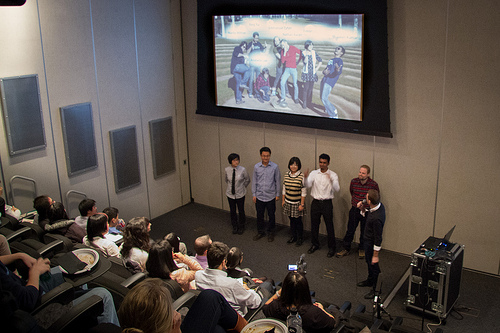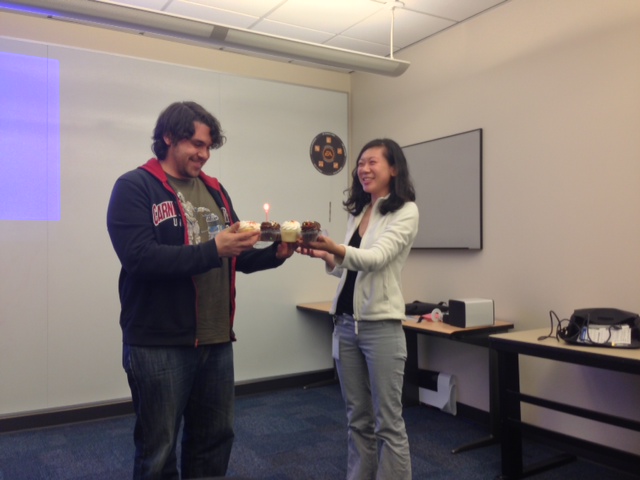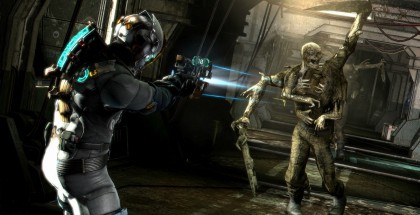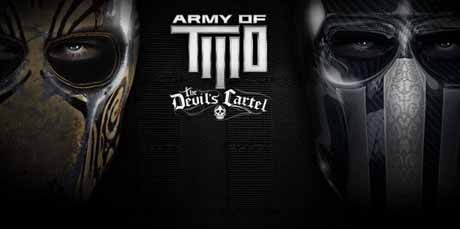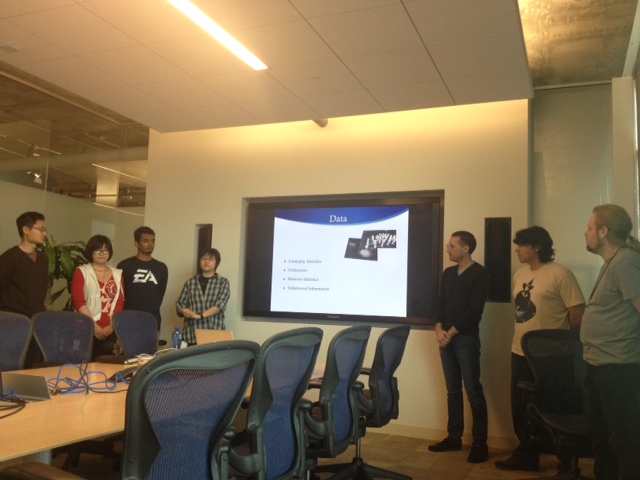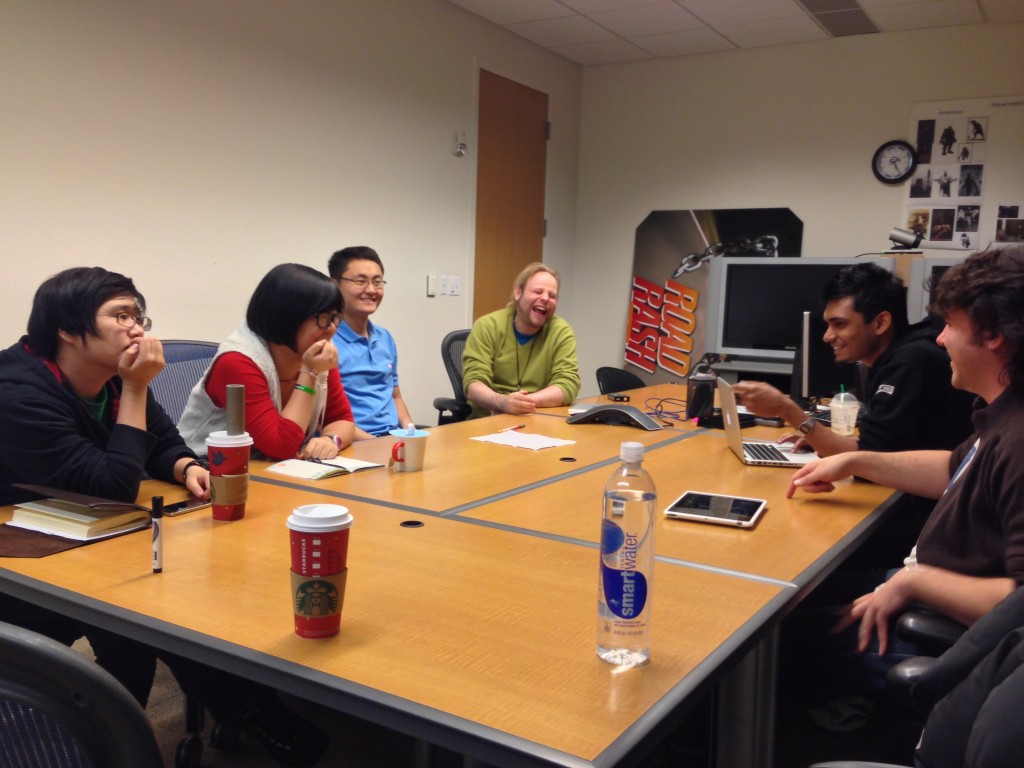Newsletter for Project Heidegger Week 5 in PDF format
Week Overview
Our team’s energy and focus was, this week, directed wholly toward our Quarters presentation, which took place on Wednesday in the Triangle auditorium (which is denoted for identification by the shape of a triangle rather than by written word, for those curious). About 35 guests were in attendance, ranging from the clients of our various teams, to employees from other EA departments. We survived Quarters intact, and, with the remainder of the week, prepared for the submission of our Dead Space 3 level to Blade, as well as for the onset of our user tests, both of which will occur next week.
In Detail
Monday and Tuesday found us, with the counsel of Jiyoung and Carl, oiling our presentation into an address of fluidity, efficiency, and precision. And so, for Quarters, Shaveen, the God of PowerPoint, created a visually rich slideshow. Emmanuel covered for an ill Martin by bearing the burden of two presenters and elucidating for the audience the essence of our project. Vera delivered an enthusiastic punch to the homeward stretch of our exhibition. Star explained our milestones with his trademark coolness and confidence. Anabelle designed for our PowerPoint a custom Heidegger-themed background template and she also strongly concluded our presentation. Martin fought off an invading virus from a far-off quarantined area, sparing us from potential contagion. And I, Nathan, have written this. During our Q&A period, the audience was most interested in our playtesting process and the preliminary choices we’ve made in that regard. From their inquiries, the importance of every decision concerning that area of our project, no matter how seemingly small, was made clear. For example, what game (apart from Dead Space 3 and Army of Two) we choose to serve as a control for our experiment will significantly impact our results, as will the order in which we have our testers play these games. Our Quarters experience was, overall, was exceedingly positive, and we look forward to showcasing an abundance of hard data, as well as the concrete efforts of our conceptualization and research, for Halves.
Next Week
As we gather information about the logistics of conducting playtests and investigate affordable biometric equipment with the final hours of this week, we hope to begin initial playtests, using the release version of Dead Space 3 and Army of Two: The 30th Day (rather than our custom level and Army of Two: The Devil’s Cartel), by next Friday. A few of us also plan to work over the President’s Day holiday next Monday so that we can submit a draft of our custom level to Blade next Wednesday, so as to facilitate his implementation of it.

